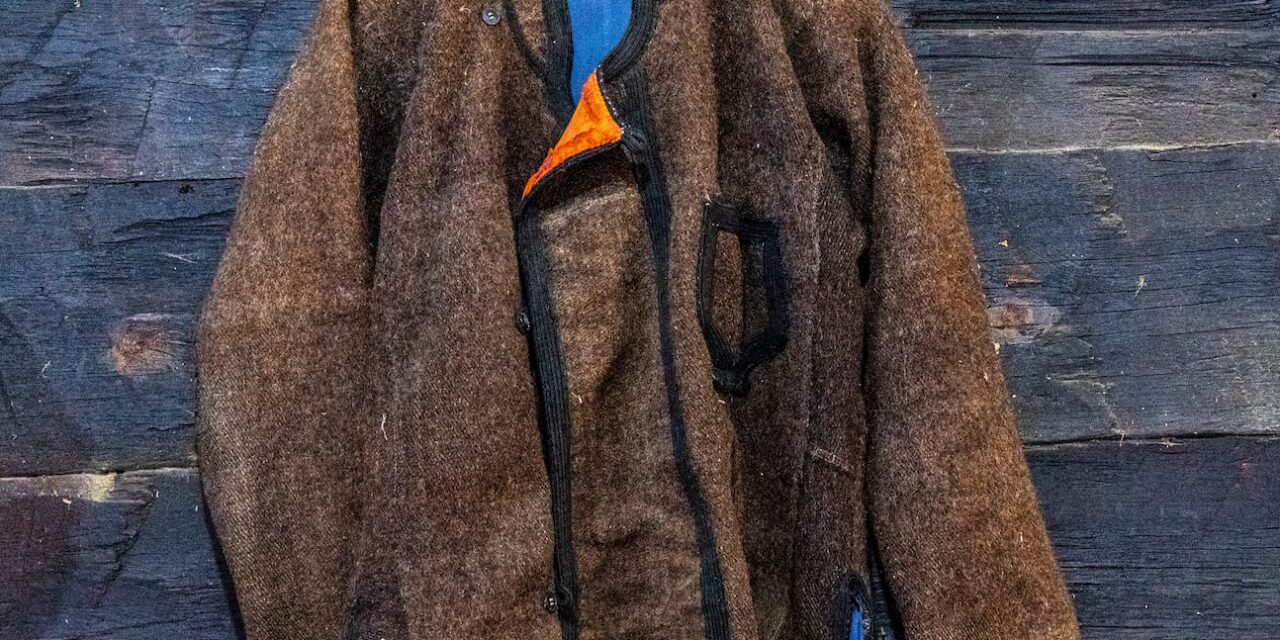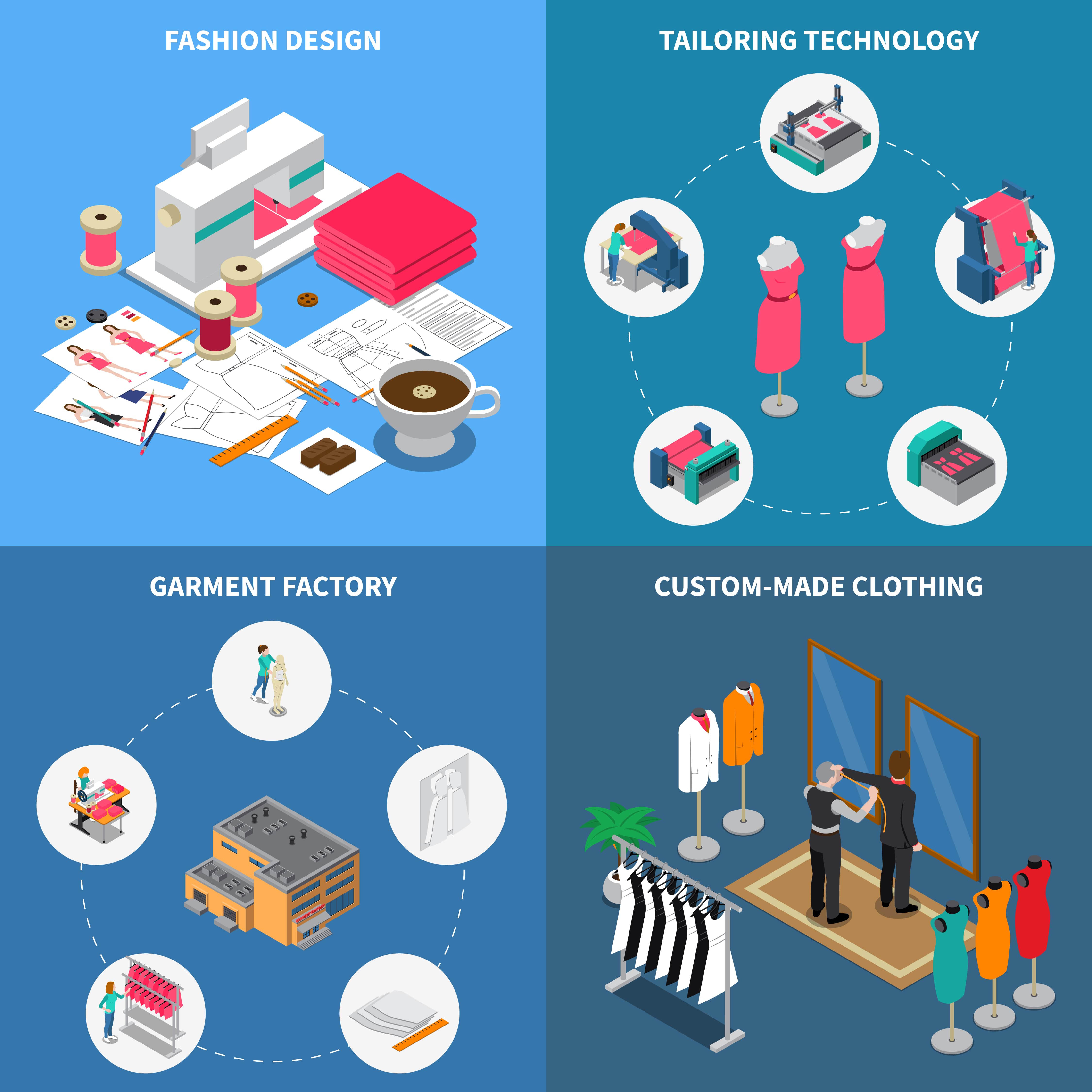Fashion is an intricate thread woven through the fabric of society, reflecting the cultural, social, and artistic movements of each era. From elaborate Renaissance garments to minimalistic modern designs, fashion has constantly evolved, leaving an indelible mark on our collective history.
In this article, we delve into the fascinating journey of how fashion changed over the years, exploring its transformative power, its relationship with copyright, and the enduring influence it holds over our lives.
Fashion in Ancient Times
In the mists of antiquity, clothing served both functional and symbolic purposes. Ancient civilizations such as Egypt, Greece, and Rome created garments to protect the body, indicate social status, and honor the divine. Fabrics, dyes, and silhouettes varied, with intricately draped togas, togas, and tunics capturing the essence of these civilizations. Fashion was intertwined with culture and tradition, reflecting the values and beliefs of the time.
Here are 5 facts about Ancient Time
- Clothing in ancient civilizations served both functional and symbolic purposes. It protected the body from the elements and reflected social status and religious beliefs.
- In ancient Egypt, garments were often made from linen, which was lightweight and comfortable in the hot climate. Priests and pharaohs wore more elaborate and intricate clothing, adorned with jewelry and symbols of power.
- Greek fashion was influenced by the draped styles of clothing, with garments such as the chiton and himation being popular. The way clothing was draped and folded became an art form, highlighting the grace and elegance of the human body.
- Roman fashion was heavily influenced by Greek culture, but it also incorporated military elements due to the empire’s expansion. The toga, worn by Roman citizens, was a large, draped garment that symbolized Roman citizenship and status.
- Fabrics used in ancient times were often sourced from natural materials like silk, wool, linen, and cotton. Dyes made from plants, minerals, and insects were used to add color and patterns to the garments, showcasing the craftsmanship and creativity of ancient civilizations.
The Renaissance and the Birth of Haute Couture
The Renaissance period witnessed a rebirth of art, science, and culture, which extended to the realm of fashion. Elaborate gowns adorned with ornate embroidery, corsets, and farthingales dominated the European courtly fashion. Tailors and seamstresses developed new techniques, leading to the establishment of haute couture, where garments were custom-made for elite clientele. Fashion became an emblem of social standing and power.
3 facts about the renaissance era of fashion
- The Renaissance period marked a significant shift in fashion, with a renewed focus on art, culture, and humanism. Fashion became a means of expressing wealth, social status, and artistic sensibilities.
- Elaborate gowns with voluminous skirts and intricate embellishments were characteristic of Renaissance fashion. Women’s fashion featured tight bodices, wide hips, and ornate sleeves, while men wore doublets, breeches, and hose.
- The rise of haute couture during the Renaissance gave birth to the concept of personalized, made-to-measure fashion. Skilled tailors and seamstresses catered to the elite, creating exquisite garments that showcased fine craftsmanship, luxurious fabrics, and intricate details.
The Industrial Revolution and Mass Production
The advent of the Industrial Revolution in the 18th century brought about significant changes in fashion. The invention of the sewing machine and mass production techniques revolutionized the industry, making clothing more affordable and accessible to the masses. Ready-to-wear fashion emerged, catering to a growing middle class seeking fashionable attire at reasonable prices. The democratization of fashion was underway.
5 facts on how the industry revolution affected fashion
- The Industrial Revolution, which began in the 18th century, transformed the fashion industry by introducing mechanization and mass production techniques. This led to a significant increase in the availability and affordability of clothing.
- The invention of the sewing machine in the mid-19th century revolutionized garment production. It greatly increased the speed and efficiency of sewing, enabling the mass production of clothing items.
- Ready-to-wear fashion emerged as a result of industrialization. Instead of custom-made garments, standardized sizes and designs were introduced, making clothing accessible to a broader range of people beyond the elite class.
- The rise of department stores in the late 19th century further contributed to the popularity of ready-to-wear fashion. These stores offered a wide variety of clothing options under one roof, making it convenient for consumers to shop for the latest trends.
- The development of new manufacturing techniques and the use of cheaper materials allowed fashion to become more affordable for the growing middle class. This accessibility of fashion played a crucial role in democratizing style and giving individuals more options for self-expression through clothing.
Fashion in the Roaring Twenties
The 1920s marked a seismic shift in fashion, as societal norms and values underwent a dramatic transformation. Women embraced shorter hemlines, loose-fitting dresses, and bold accessories, defying traditional gender roles. The iconic flapper style became synonymous with the Jazz Age, representing a newfound sense of freedom and rebellion. This era witnessed the fusion of fashion and cultural revolution.
Some key highlights of fashion in 1920s
- The 1920s, also known as the Roaring Twenties or the Jazz Age, marked a period of significant cultural and social change. Fashion became a reflection of the newfound liberation and freedom experienced by women after World War I.
- One of the iconic fashion trends of the 1920s was the shift towards shorter hemlines. Women embraced the flapper style, characterized by knee-length dresses and dropped waistlines, challenging traditional notions of femininity and emphasizing a more youthful and carefree image.
- Fabrics such as silk, chiffon, and satin were popular choices for 1920s fashion, as they allowed for fluid movement and a sense of lightness. Beaded embellishments, fringes, and sequins were often used to add a touch of glamour and sparkle to the garments.
- The silhouette of the 1920s shifted from the hourglass figure to a more straight and boyish shape. Corsets and restrictive undergarments were discarded, and women embraced a looser, more comfortable style. This change in silhouette was influenced by the desire for freedom of movement and a departure from Victorian ideals.
- Accessories played a crucial role in 1920s fashion. Cloche hats, with their close-fitting and bell-shaped design, were popular among women. Long beaded necklaces, feathered headbands, and T-strap shoes were also fashionable choices, adding a touch of elegance and sophistication to the overall look.
The Golden Age of Hollywood and Fashion Influence
In the mid-20th century, Hollywood became a potent force shaping fashion trends worldwide. Glamorous movie stars like Audrey Hepburn and Marilyn Monroe captivated audiences with their impeccable style, influencing the masses. Designers collaborated with the film industry, creating iconic looks that set the stage for future fashion revolutions. Fashion became a means of personal expression and a reflection of individuality.
Key points from the era of Hollywood influence on fashion
- The Golden Age of Hollywood, spanning from the 1920s to the 1960s, had a profound influence on fashion trends. Movie stars became style icons, and their on-screen costumes and personal fashion choices greatly influenced popular culture.
- Actresses such as Audrey Hepburn, Marilyn Monroe, and Grace Kelly had a significant impact on fashion during this era. Their distinctive styles, epitomized by Hepburn’s elegant and timeless looks, Monroe’s glamorous and sensual attire, and Kelly’s refined and sophisticated ensembles, continue to inspire fashion trends to this day.
- Hollywood collaborated closely with fashion designers, creating a symbiotic relationship between the film industry and the fashion world. Designers like Edith Head, Adrian, and Givenchy worked closely with actresses to create iconic looks that captured the imagination of audiences and set new fashion trends.
- The red carpet emerged as a prominent platform for fashion showcase during this time. Award ceremonies and film premieres became highly anticipated events, where celebrities showcased the latest couture designs. The glamorous gowns and exquisite jewelry worn by stars on the red carpet influenced the fashion choices of people worldwide and became a source of inspiration for formal occasions.
The Swinging Sixties and the Counter-Culture Revolution
The 1960s witnessed a counterculture revolution that challenged societal norms, and fashion followed suit. The miniskirt, psychedelic patterns, and vibrant colors epitomized the youth movement and the rejection of traditional values. Influential designers like Mary Quant and André Courrèges embraced these changes, pushing boundaries and shaping a new fashion aesthetic. The fashion industry became a platform for rebellion and self-expression.
Highlights from the 1960s
- The 1960s witnessed a counterculture revolution that brought significant changes to the fashion landscape. The youth movement, fueled by political and social activism, challenged traditional norms and embraced a more liberal and rebellious approach to fashion.
- The miniskirt became an iconic symbol of the 1960s fashion revolution. British designer Mary Quant is often credited with popularizing this daring and provocative garment, which challenged the conventional notion of modesty and represented the newfound freedom and empowerment of women.
- Psychedelic patterns, vibrant colors, and bold prints were hallmarks of 1960s fashion. The fashion industry embraced bold and unconventional designs inspired by art, music, and cultural movements. The use of paisley, floral, and geometric prints in bright, eye-catching colors reflected the spirit of experimentation and individuality that defined the era.
Fashion in the Digital Age
The advent of the internet and digital technology revolutionized the fashion landscape. E-commerce platforms and social media platforms provided new avenues for fashion discovery, enabling designers and consumers to connect globally. Fast fashion gained prominence, with trends quickly disseminating and accessible to a wider audience. The digital age transformed the way we consume, create, and interact with fashion, further blurring the boundaries between the virtual and the physical.
Key points on how the digital revolution is changing fashion
The 21st century ushered in the digital age, transforming various aspects of the fashion industry. Technology has played a pivotal role in reshaping how fashion is produced, consumed, and experienced.
- E-commerce: The rise of the internet and e-commerce platforms revolutionized the way people shop for fashion. Online retailing allowed consumers to browse and purchase clothing from the comfort of their homes, eliminating geographical limitations and expanding choices. E-commerce platforms like Amazon, ASOS, and Zalando made fashion more accessible and convenient, giving rise to a global marketplace where trends could quickly spread across borders.
- Social Media Influence: Social media platforms such as Instagram, Facebook, and Pinterest have had a profound impact on fashion. Influencers and fashion bloggers leverage these platforms to share their personal style, provide fashion inspiration, and promote brands. Through social media, fashion trends can go viral within minutes, reaching millions of users worldwide. It has democratized fashion by giving individuals a platform to express their unique style and create online fashion communities.
- Fast Fashion and Its Impact: The digital age also witnessed the rise of fast fashion. Companies like Zara, H&M, and Forever 21 pioneered the concept of quickly producing affordable, on-trend clothing to cater to rapidly changing consumer demands. Fast fashion brands use the speed and efficiency of digital technology to bring new designs from the runway to stores in a matter of weeks. However, this has also raised concerns about its environmental and ethical impact due to excessive production, waste, and poor working conditions in the supply chain.
- Virtual Try-On and Augmented Reality: Technological advancements in augmented reality (AR) and virtual reality (VR) have transformed the shopping experience. Virtual try-on tools allow customers to visualize how clothing items would look on them without physically trying them on. AR-powered apps and mirrors enable users to virtually try different outfits and experiment with styles, enhancing the convenience and personalization of the shopping process.
- Sustainability and Innovation: The digital age has also given rise to a growing emphasis on sustainability and innovation within the fashion industry. Eco-conscious consumers are demanding transparency, ethical sourcing, and environmentally friendly practices. Technologies like 3D printing, upcycling, and fabric recycling are being explored to reduce waste and create more sustainable fashion solutions.
Overall, the digital age has disrupted traditional fashion systems, democratized access to fashion, and accelerated the pace of trends. The fashion industry continues to adapt to these technological advancements, finding new ways to connect with consumers, streamline production processes, and address the challenges of sustainability and social responsibility.
Can Fashion Be Copyrighted?
The question of whether fashion can be copyrighted is a complex and debated topic in the industry. Unlike other artistic disciplines like music, literature, or visual arts, fashion design does not enjoy the same level of legal protection. Generally, copyright law does not extend to clothing designs, as they are considered utilitarian objects.
However, certain aspects of fashion can be protected under intellectual property laws. For instance, unique prints, patterns, logos, or distinctive fabric designs can be eligible for copyright protection. Additionally, elements such as original jewelry designs, shoe designs, and accessories may qualify for design patents. Fashion brands often rely on trademark protection to safeguard their logos, brand names, and distinctive symbols.
The lack of comprehensive copyright protection in fashion has fostered a culture of inspiration and imitation. While some argue that this encourages innovation and the evolution of trends, others raise concerns about plagiarism and the exploitation of designers’ creativity. The fashion industry often walks a fine line between inspiration and infringement, with designers and brands striving to strike a delicate balance.
Frequently Asked Questions on How fashion changed over the years
- How has fashion changed over the years? Fashion has transformed drastically over time, adapting to shifting cultural, social, and technological landscapes. Each era has brought its unique style, materials, and silhouettes, reflecting the spirit of the times.
- Can fashion be copyrighted? While fashion design as a whole is not typically subject to copyright protection, certain aspects such as prints, patterns, and accessories may qualify for legal protection under intellectual property laws.
- What role does technology play in shaping fashion trends? Technology has had a profound impact on the fashion industry, from manufacturing processes to marketing strategies. E-commerce, social media, and digital design tools have revolutionized the way fashion is produced, consumed, and experienced.
- How does fashion influence society? Fashion has a profound influence on society, reflecting and shaping cultural values, identities, and aspirations. It serves as a form of self-expression and communicates social messages, making it a powerful tool for personal and collective transformation.
- What is the future of fashion? The future of fashion is likely to be shaped by sustainability, inclusivity, and technology. With a growing emphasis on ethical practices, there is a shift towards eco-friendly materials, transparent supply chains, and circular fashion models. Technological advancements, such as 3D printing and virtual reality, hold the potential to revolutionize the design and production processes.
Conclusion
Fashion, as an ever-evolving art form, has traversed centuries, reinventing itself to reflect the spirit of each era. From ancient civilizations to the digital age, fashion has been a dynamic force, influencing culture, society, and individual self-expression. While copyright protection in fashion remains limited, the industry continues to adapt to new challenges and opportunities presented by technology and changing consumer expectations.
As fashion continues to evolve, it will undoubtedly leave an indelible mark on our collective history and shape the way we present ourselves to the world. Embrace the transformative power of fashion and let it be a reflection of your unique style and personality.










